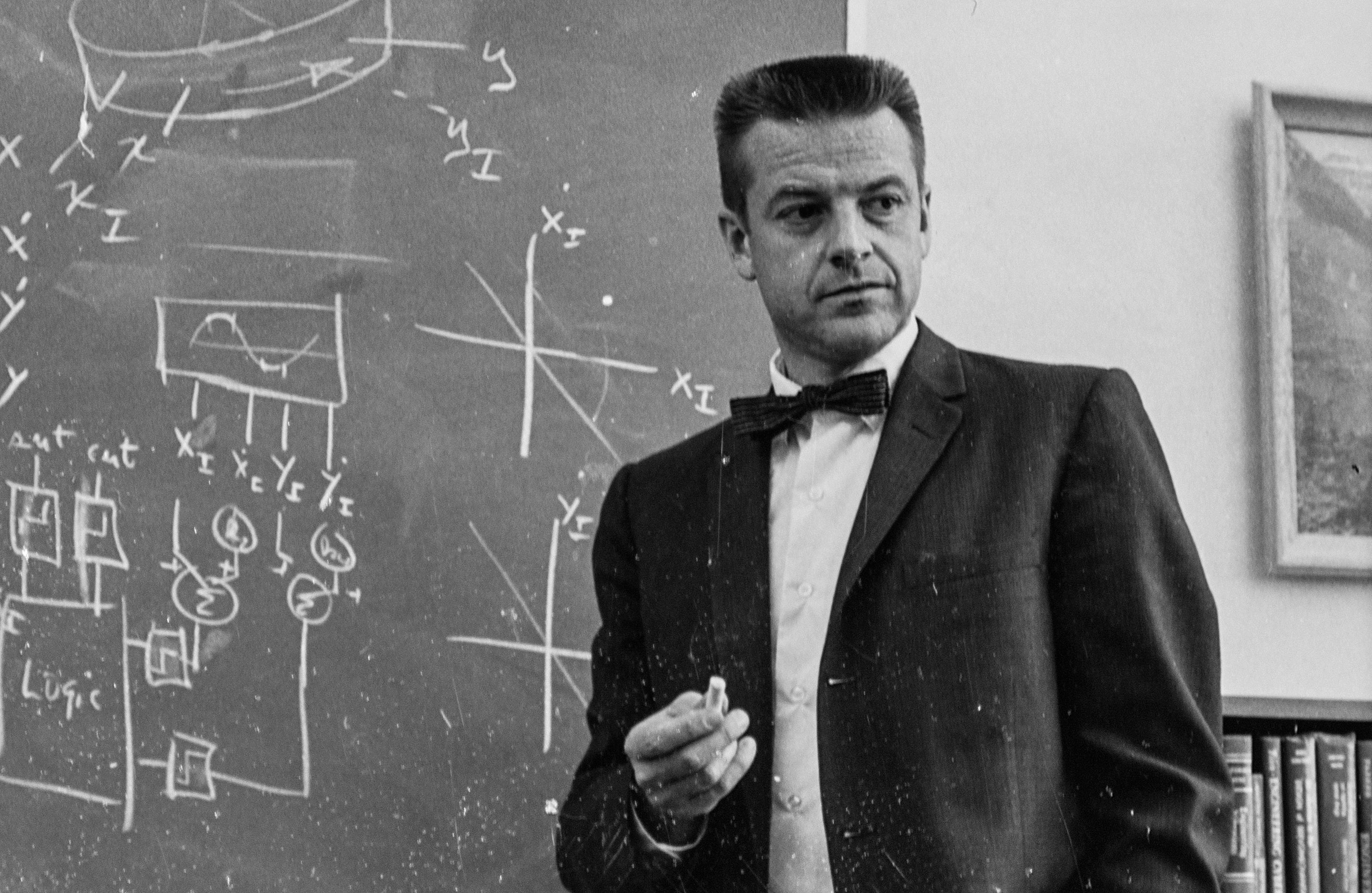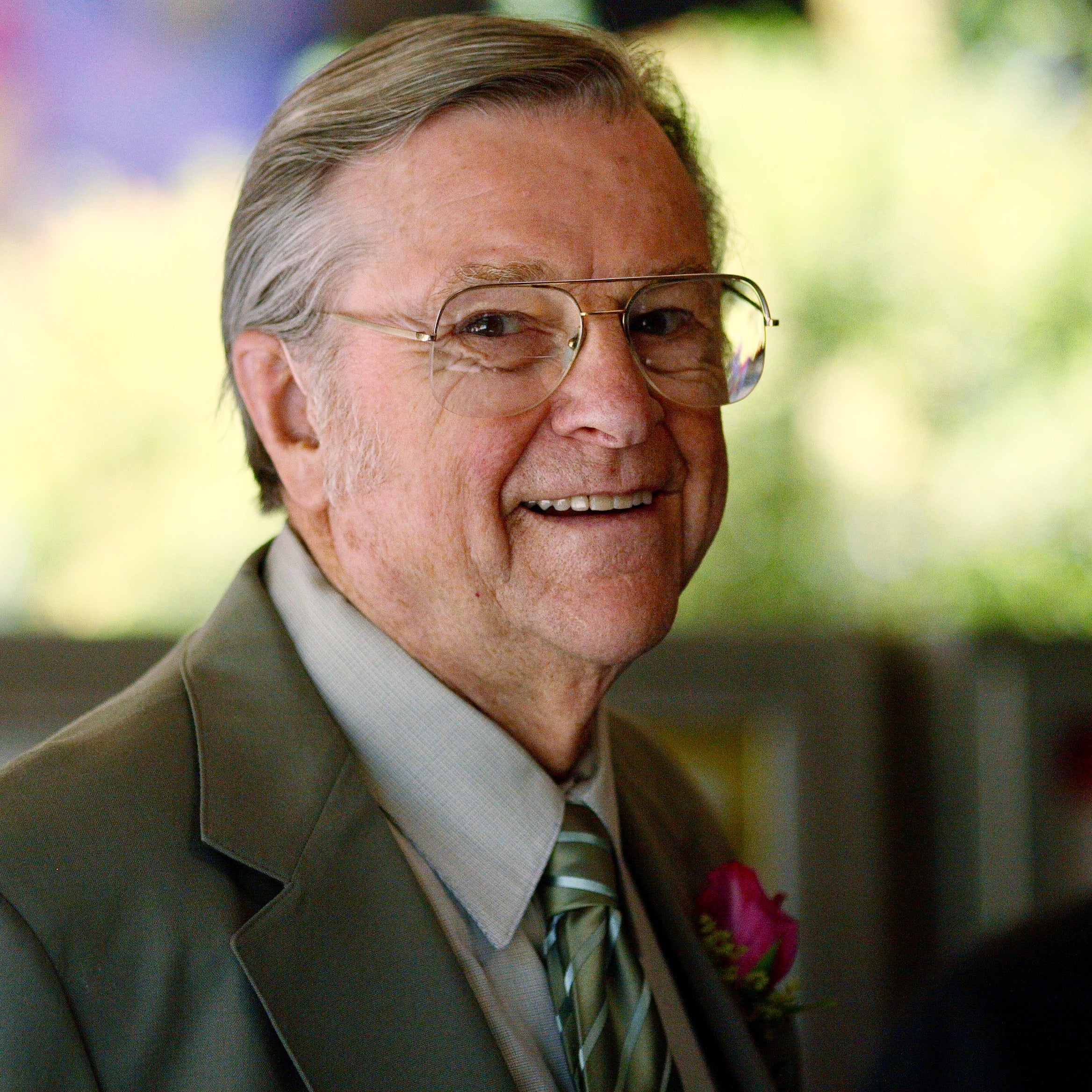Robert Cannon, the Charles Lee Powell Professor of Aeronautics and Astronautics, Emeritus, at Stanford University, was known for his visionary work on robotics and for his role in developing a spinning gyroscope that provided evidence for Einstein’s theory of relativity. He was regarded as an excellent judge of people who surrounded himself with outstanding students and new faculty members. Following a brief illness, Cannon passed away Aug. 15 in Stanford Hospital at 93.

Robert Cannon first came to Stanford as a professor of aeronautics and astronautics in 1959 and spent most of his career here, with notable leaves of absence for government service. (Image credit: Stanford News Service)
“We had a lab filled with brilliant students because of Bob’s ability to identify them, recruit them to Stanford and get them in the lab,” said Stephen Rock, professor of aeronautics and astronautics, who helped build the Aerospace Robotics Lab with Cannon. “What got him really excited were his students and their accomplishments.”
But Cannon wasn’t just a great mentor. He also saw the future of autonomous robots in the 1980s, when the technology to create them was just becoming possible.
“He envisioned sophisticated, flexible robots that could carry out complex tasks in space under high-level human control and over large time constants,” Rock said. “He had the vision to see what this new technology could be used for and the problems people had.”
Rock added, “He was also always fun to work with.”
Born Oct. 6, 1923, Cannon grew up in Toledo, Ohio. He earned his BS in engineering from the University of Rochester in New York, then did a Pacific tour as an ensign in the Navy after the bombing of Pearl Harbor. Two years later, he was sent to Florida for radar training. He was assigned to a destroyer that went to Guantanamo, Cuba, to explore uses of this then new technology.
After the Navy, Cannon earned his PhD at the Massachusetts Institute of Technology, where he did his thesis on hydrofoil systems with mechanical engineering professor J. P. Den Hartog. During that time, Cannon worked with Baker Manufacturing to design a hydrofoil sailboat that could travel 31 knots. It remained the fastest sailboat for the next 30 years.
In 1950, Cannon took a job in Whittier, California, working both as an aeronautical engineer for North American Aviation and as a professor of aeronautics at UCLA. Then, in 1957, he returned to MIT as a professor of engineering until Stanford University asked him to build its Guidance and Control program in 1959.
Cannon left Stanford for the California Institute of Technology, where he chaired the division of engineering and applied science from 1974 to 1979. He then returned to Stanford for good in 1979 to chair the Department of Aeronautics and Astronautics, a role he held until 1990. He retired in 1995, but continued to live on campus and meet with his colleagues.
Cannon’s gift for identifying and mentoring talent served him well building the department he led.
“He was one of the best department chairs I ever worked with,” said George Springer, professor emeritus of aeronautics and astronautics, who followed Cannon as chair of the department. “He always hired people who he had faith in and let them loose. He provided everything they needed to succeed. He was also always optimistic and upbeat.”
Throughout his career, Cannon served in governmental roles. From 1966 until 1968, he was chief scientist of the U.S. Air Force at the Pentagon, and from 1970 until 1974, he was assistant secretary of transportation for research and development under Richard Nixon. Later, he chaired the Assembly of Engineering of the National Academy of Engineering, served on the National Research Council’s Governing Board, its Aeronautics and Space Engineering Board and its Ocean Studies Board. He also chaired the President’s Committee on the National Medal of Science.
Focus on space
At Stanford in 1959, Cannon was one of a group of three researchers – including Leonard Schiff and William Fairbank – who initially proposed a spinning gyroscope sent into space to measure Einstein’s general theory of relativity. That project was eventually named Gravity Probe B, and after several decades, multiple careers and close to $750 million in spending finally launched in 2004. It took several more years to gather data accurate enough to verify numbers predicted by Einstein’s theory. Although Cannon remained active in that project, it was primarily led by Stanford physicist Francis Everitt.
Cannon’s other academic interests also revolved around space. In the 1980s, Cannon founded the Aerospace Robotics Lab (ARL) at Stanford to develop robots he described as “deft, light and flexible and don’t use much energy.”
He had said, “The robots you see today in factories or in space are not very bright, and they are also awfully clumsy.”
Cannon thought robots could never be as smart or dexterous as humans, but humans could never work under the conditions robots could, like in space or underwater. He envisioned human-robot teams that could carry out complex tasks, like removing debris from space or collecting deep-water organisms. Building those systems required both leveraging the automatic control technology that was just being developed and designing the robots themselves.
“Bob believed in building things,” Rock said. “Every student would have to build a device to demonstrate the new things we were trying to do.”
Some of the ideas Cannon first proposed when founding ARL are still being worked on today, like autonomous, free-flying helicopters, devices that can grab materials in space and the controls that allow humans and robots to communicate. “His proposals were really ahead of their time,” Rock said. “He saw the full spectrum of what supervised autonomous robots could do.”
A family man
On Jan. 4, 1945, Cannon married his high school sweetheart, Dorothea Alta Collins. Together they had seven children, four of whom attended Stanford. “One of the things he was proud of is that all six of his sons are Eagle Scouts,” said his son Jim Cannon.

Robert Cannon, 1923-2017 (Image credit: Brad Elliott)
In 1984, during the Gravity Probe B project, Cannon reflected on the relative importance of his work and family life. “I am proud that we are engaged in a research effort that is 10 million times more difficult than what anyone has attempted before, but in my scale of values, my now-grown family – six boys and a girl – is definitely more important.”
Cannon remained dedicated to his family and community throughout his life. He and his son Jim went on bike rides twice a week around campus, with Cannon moving to a three-wheeled bike in his later years. Cannon also sang with his church, and enjoyed playing flute with family and at church. At family events, he would often play Ave Maria with Jim accompanying on piano.
Cannon’s first wife, Dorothea, preceded him in death. Cannon is survived by his second wife of nearly 30 years, Vera Berlin Cannon of Stanford, and his children: Philip Gregory Cannon of Vallejo, California; Douglas Charles Cannon of Sichuan, China; Beverly Cannon Mosier of Newark, California; Frederick Scott Cannon of State College, Pennsylvania; David John Cannon and Joseph Collins Cannon-Morrett of Santa Clara, California; and James Robert Cannon of San Jose, California. He is also survived by his three stepdaughters; his sister Lois Alberts of Middlebury, Vermont; and 13 grandchildren, 9 great-grandchildren, 5 nieces and 2 nephews.
A memorial service will be held Saturday, Sept. 23, at 2 p.m. at the Valley Presbyterian Church, 945 Portola Road, Portola Valley.
Editor's note: An earlier version of this article incorrectly noted that Cannon founded the Aerospace Robotics Lab (ARL) in the early 1990s.
Media Contacts
Amy Adams, Stanford News Service: (650) 497-5908, amyadams@stanford.edu